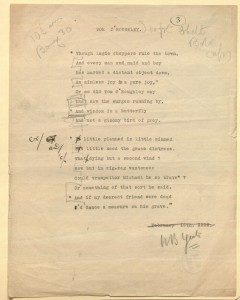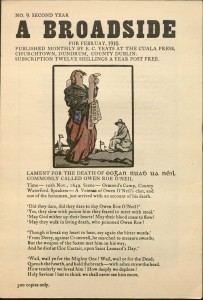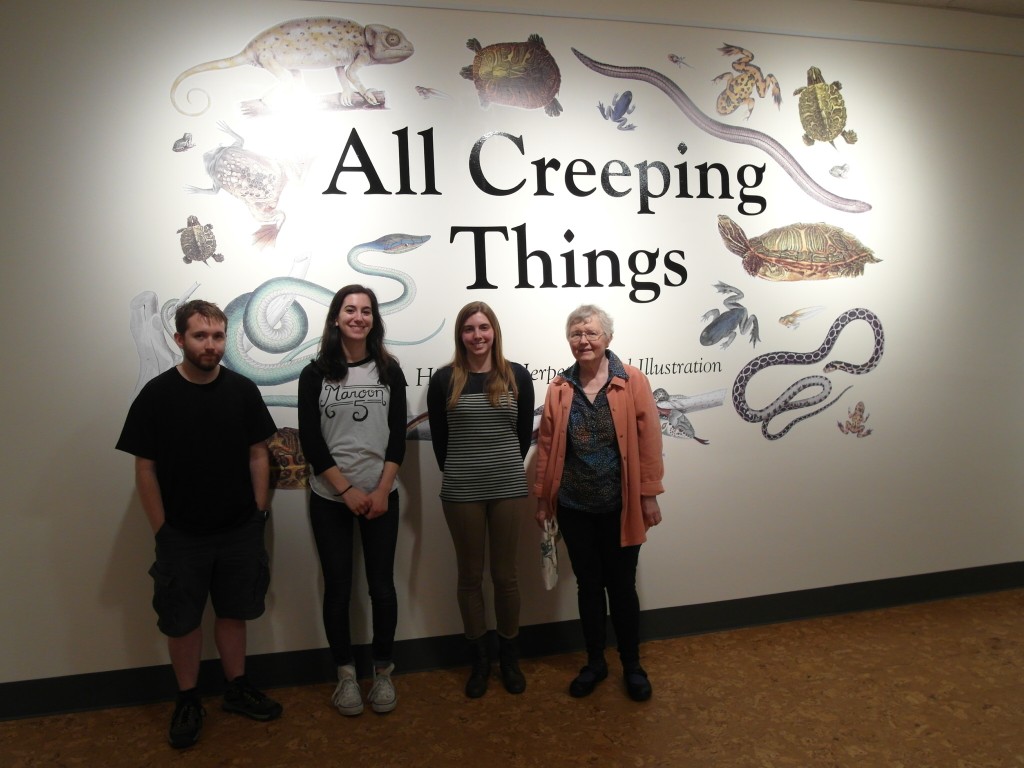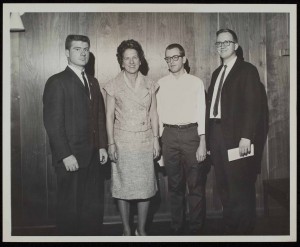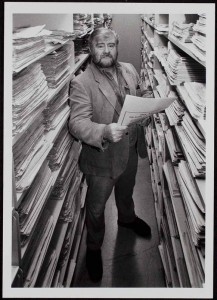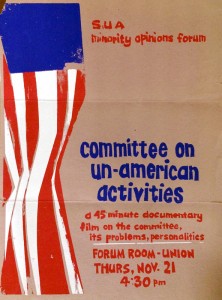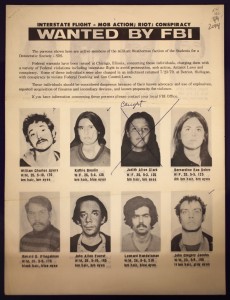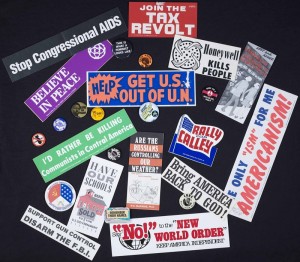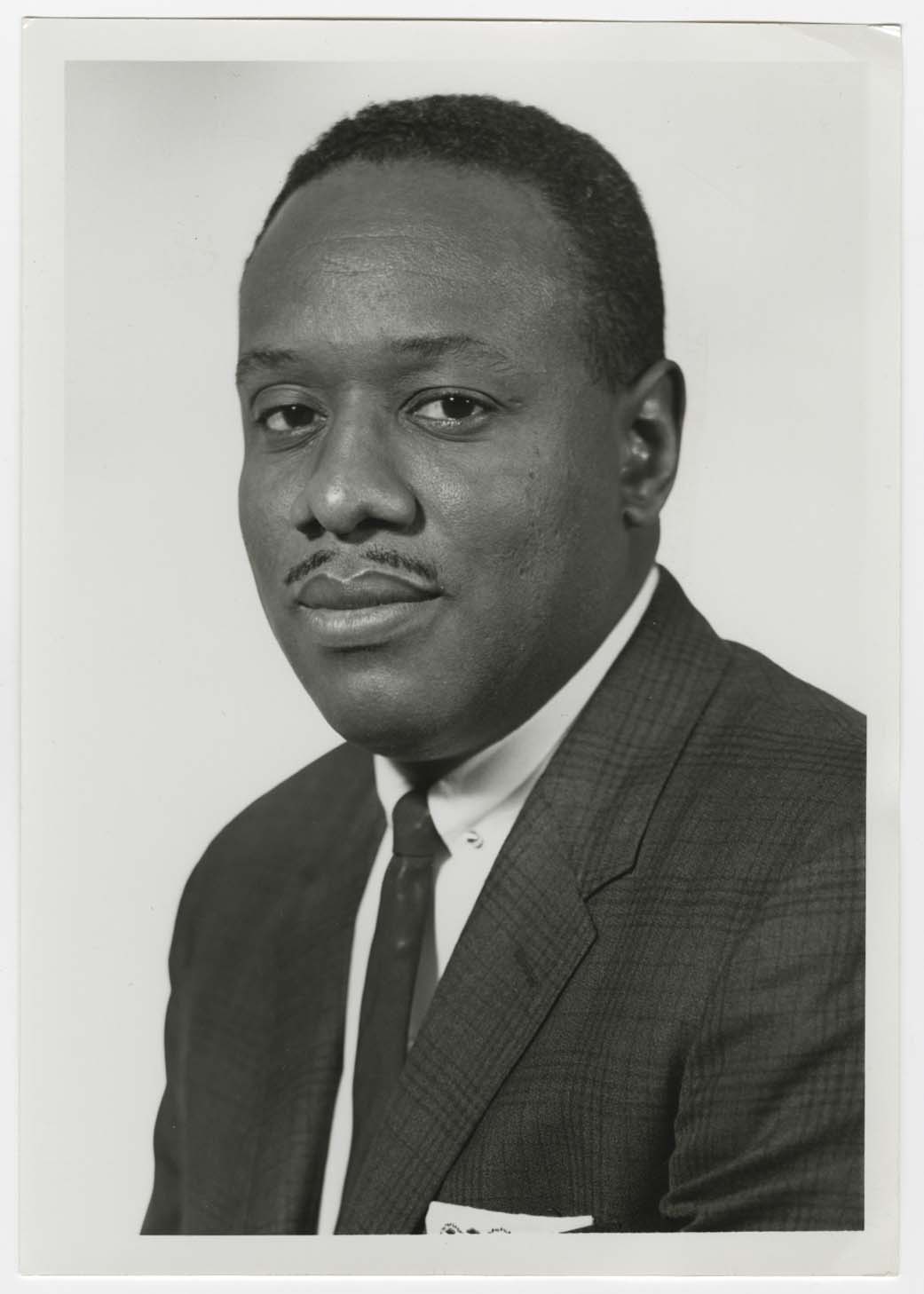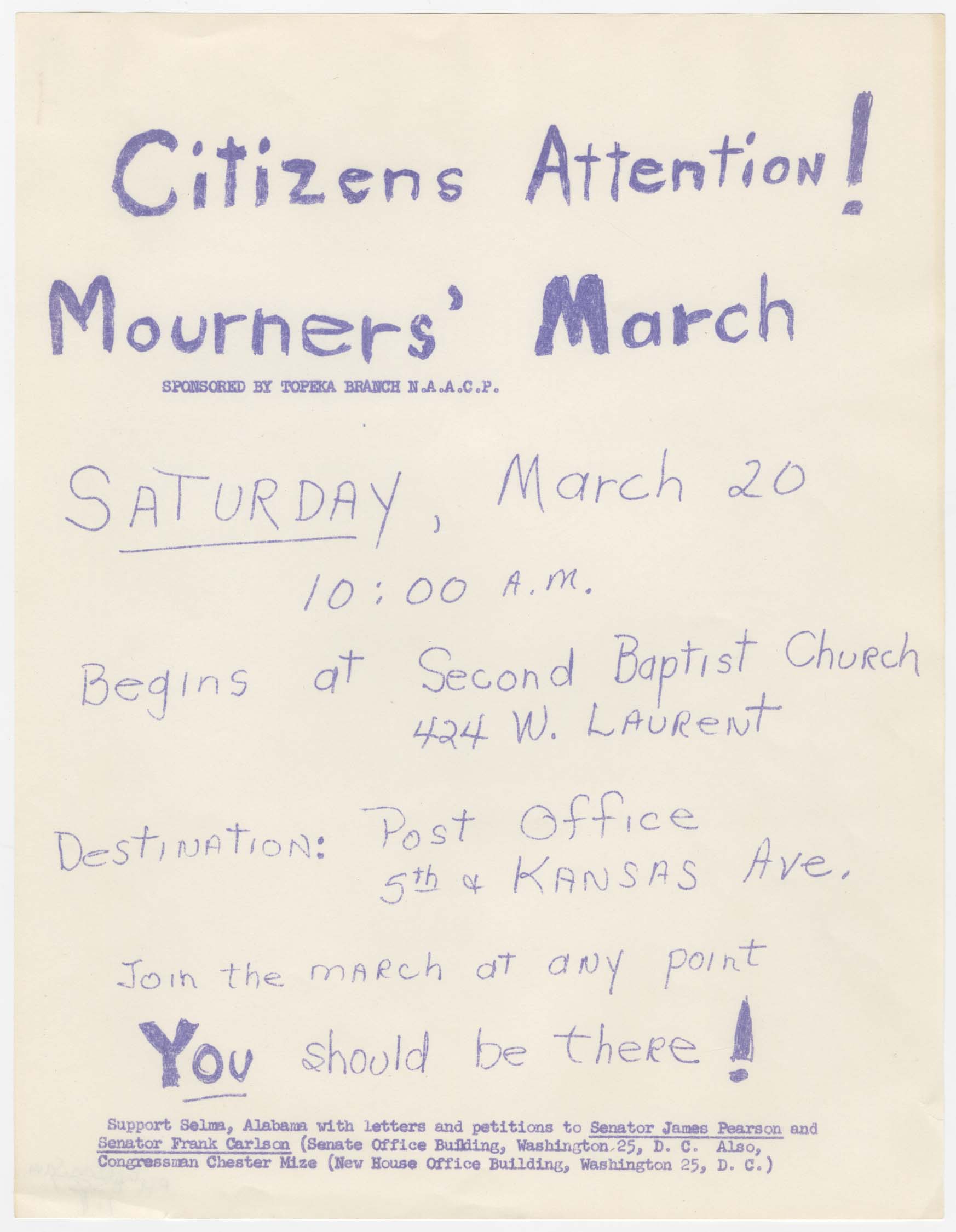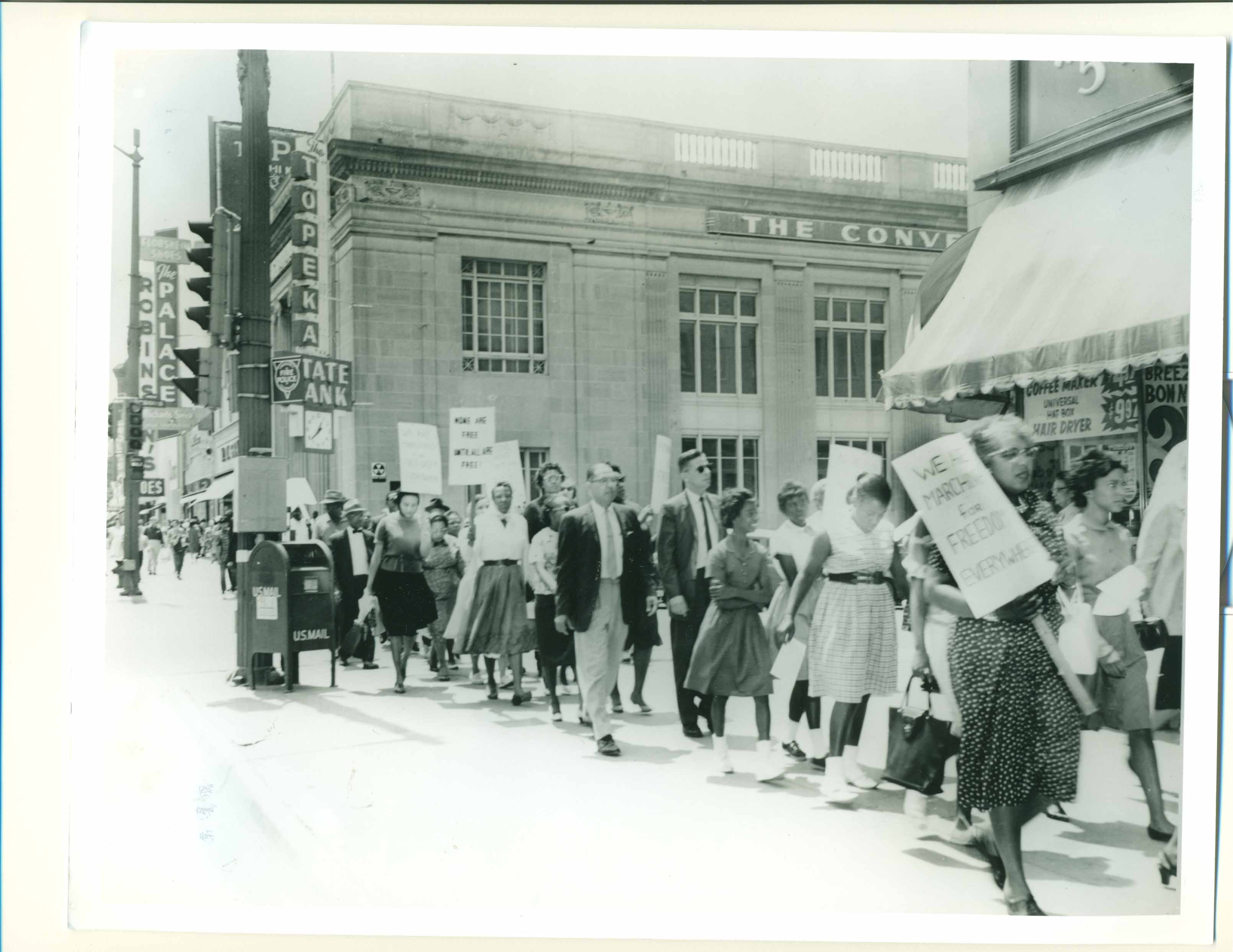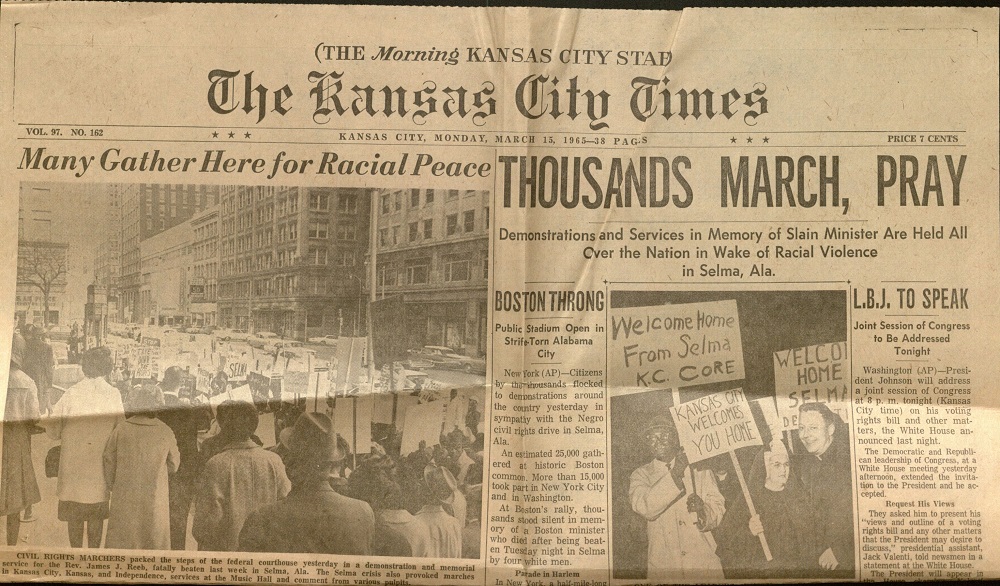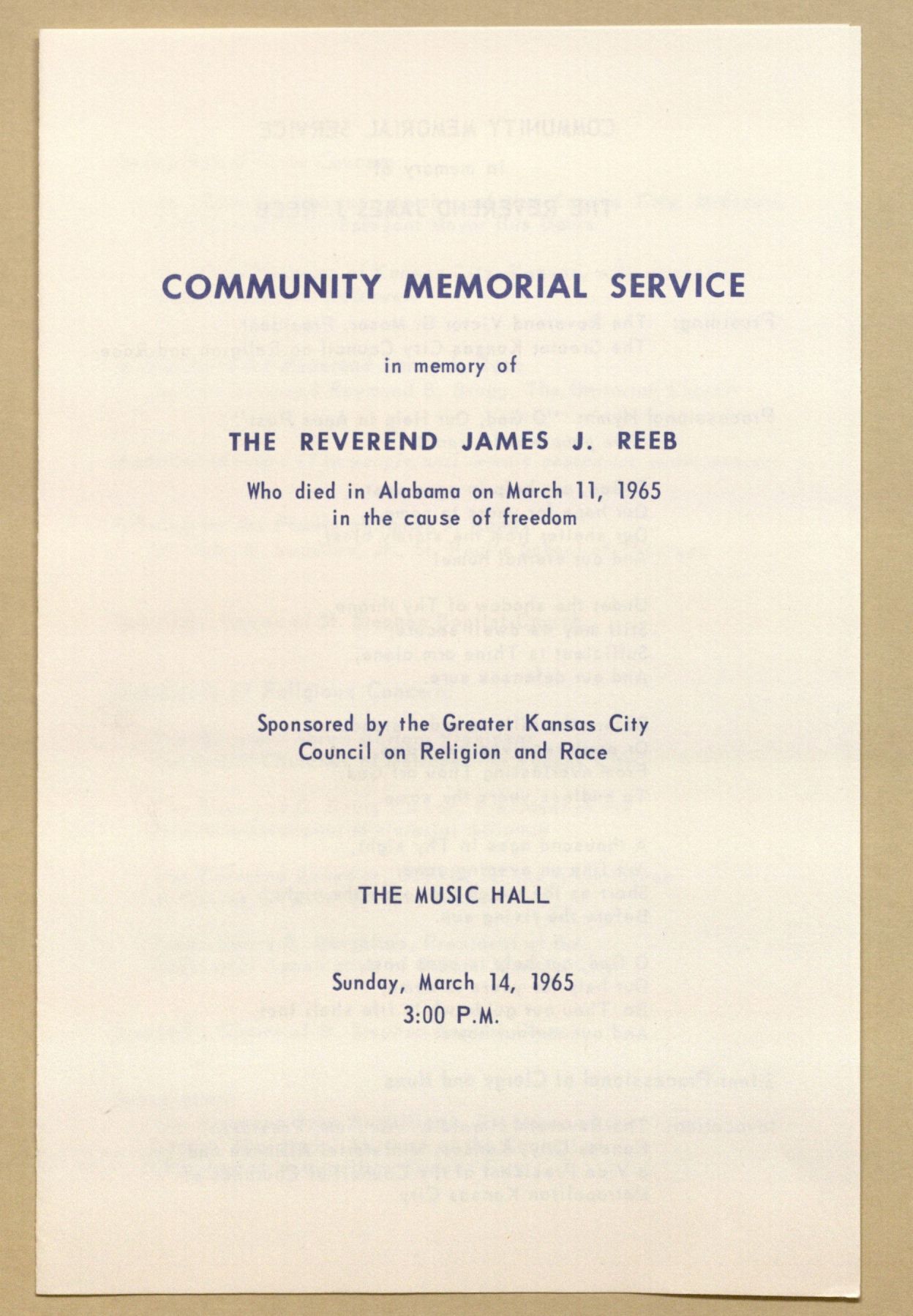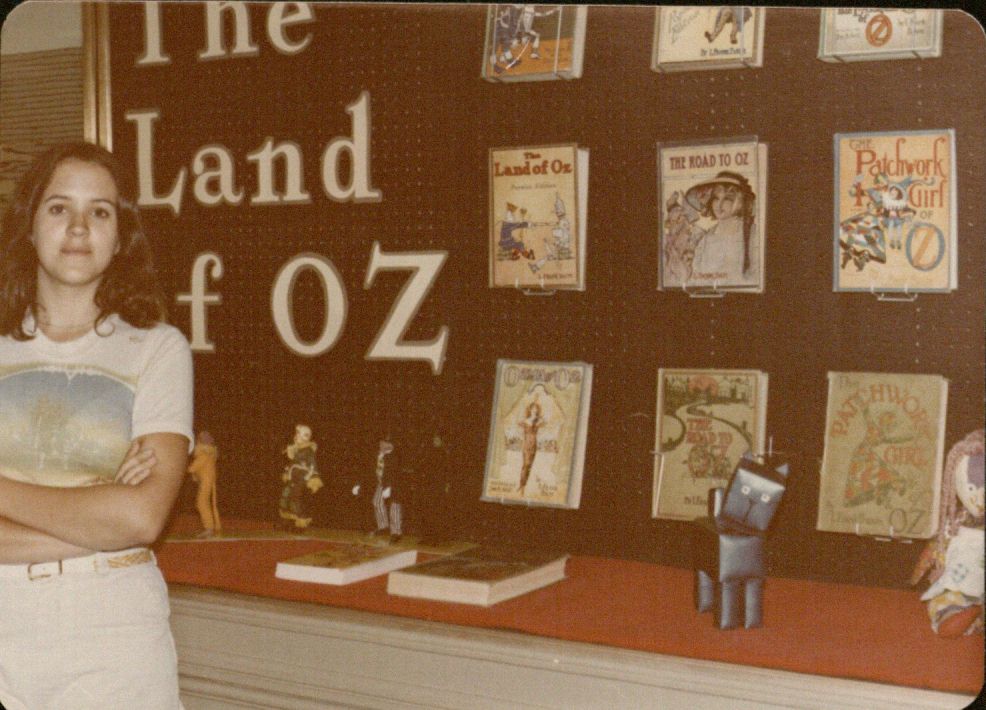Yeats at KC Irish Fest
September 8th, 2015The Irish collections from Special Collections at Spencer Library were represented at the Kansas City Irish Fest this past Labor Day weekend. We were asked by Irish Fest organizers to exhibit some items from our W. B. Yeats Collection to celebrate the sesquicentennial of his birth. Featured here are a few of the items selected by Special Collections Librarian Elspeth Healey.
Whitney Baker and Elspeth Healey at KC Irish Fest
Letter from W. B. Yeats to A. H. Bullen. March 28, [1909].
In this letter, we see Yeats’s generosity to other writers as he encourages his publisher, A. H. Bullen, to read the manuscript of a young poet that he had met in London. “There may be some fire in the flax,” he comments to Bullen. Though the letter’s dateline does not include a year, Yeats’s opening reference to the death of Irish writer J. M. Synge fixes the date as 1909. Just two years earlier, Synge’s The Playboy of the Western World had sparked audience protests when it was first performed at the Abbey Theatre. Some nationalist viewers objected the play’s language and what they saw as its unflattering portrayal of Irish peasant society.
Letter from W. B. Yeats to A. H. Bullen. March 28, [1909]. Special Collections, call number MS 25 Wa 2.57. Click image to enlarge.
Yeats, W. B. “Tom O’ Roughley,” typescript with manuscript emendations. ca. 1918.
This typescript copy of “Tom O’Roughley” is signed and revised in manuscript by Yeats, with additional markings in pencil by the printer. It appeared in Nine Poems (1918), a collection printed privately by Yeats’s friend Clement Shorter. Shorter also printed for private circulation the first edition of Yeats’s poem “Easter 1916.” The “Tom O’Roughley” of this poem shares much with the figure of the “fool” outlined by Yeats in Phase 28 of A Vision (1925, 1937). There Yeats writes, “his thoughts are an aimless reverie; his acts are aimless like his thoughts, and it is in his aimlessness that he finds joy.”
Yeats, W. B. “Tom O’ Roughley,” typescript with manuscript emendations. ca. 1918. Special Collections, call number MS 25 Wd.1.3 Tom O’Roughley. Click image to enlarge.
A Broadside. Dundrum, Ireland: E.C. Yeats, The Cuala Press. No. 9, Second Year (February 1910)
W. B. Yeats’s sisters Susan (Lily) and Elizabeth (Lolly) founded Cuala Industries in 1908, following an earlier printing and craft venture, Dun Emer Industries. Lily produced embroidery, and Lolly oversaw the Cuala Press, which brought out titles by primarily Irish writers, including many by W. B. Yeats himself. Below is an issue of A Broadside, a series that featured both contemporary and traditional poems and ballads. Each issue was printed in folio format—a single sheet folded once—and was illustrated with hand-colored woodcuts by Yeats’s brother, the artist Jack B. Yeats, who also edited the first series (1908-1915).
A Broadside. Dundrum, Ireland: E.C. Yeats, The Cuala Press. No. 9, Second Year (February 1910). Special Collections, call number Yeats Y339, No. 9, Year 2. Click image to enlarge.
Whitney Baker
Head, Conservation Services



